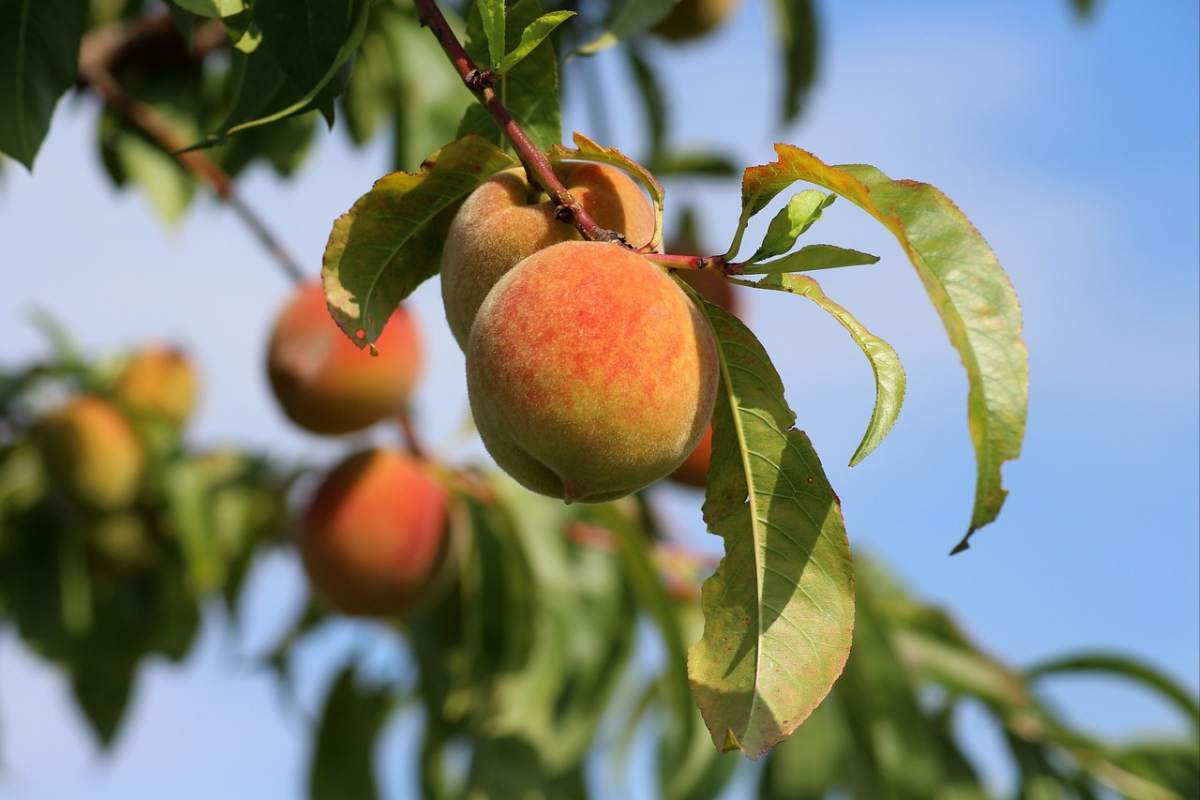Plant hardiness zone 6 in the United States is a band from central New England to the Midwest to the central Great Plains, and the inland Pacific Northwest. In this article we list some fruit trees that you might consider growing if you live in this zone.
Zone 6 occupies at least part of the following states:
- Connecticut
- Delaware
- Illinois
- Indiana
- Iowa
- Kansas
- Kentucky
- Maine
- Maryland
- Massachusetts
- Michigan
- Missouri
- New Hampshire
- New York
- Ohio
- Pennsylvania
- Rhode Island
- Vermont
- Virginia
- West Virginia
- Wisconsin.
Before we take a look at the list of fruit trees for zone 6, however, take a look at the map of the United States’ planting hardiness zones. They’re separated by color so that you can understand the temperature zones and where you land on that map.
Zone 6 generally refers to an area where the minimum winter temperature is between -10 and 0 degrees Fahrenheit (-23 and -18 degrees Celsius). A This zone is known for its long, hot summers and cold winters. Temperatures can descend to a minimum of -10 to 0F during the winters. This article provides an overview of some of the fruit trees that thrive in Zone 6 as well as some background to their traits and the best varieties to grow.
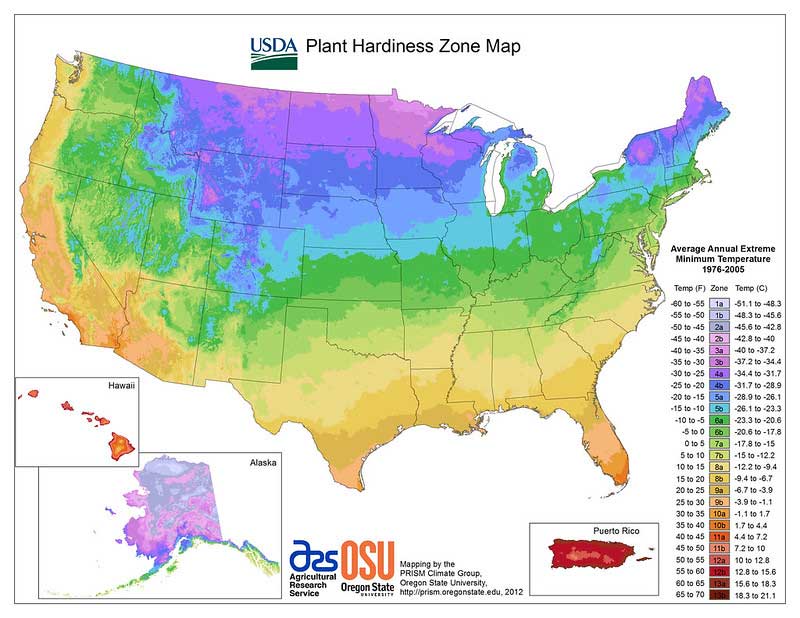
11 Fruit Trees for Zone 6
1. Apple
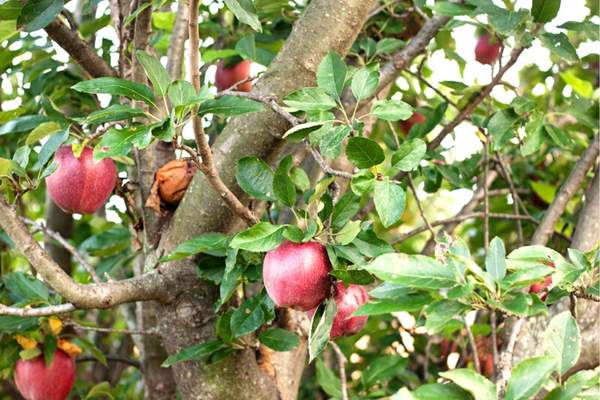
Scientific name: Malus spp.
Apples are the perennial favorite of many a backyard gardener. They’re mid-level maintenance, provide a bountiful harvest yearly, and their fruit can be used for a multitude of different purposes. The one catch with growing an apple tree in a zone 6 environment is ensuring that you get enough cold weather to ensure the chilling requirements are satisfied.
It takes between 5-7 years for the tree to start bearing fruit, but a regular size apple tree will live between 50-80 years. Ensure your tree has full sunlight, good drainage, and mildly acidic soil. Red delicious apples are good options, and so are Pink Lady and Autumn Crisp.
2. Pear
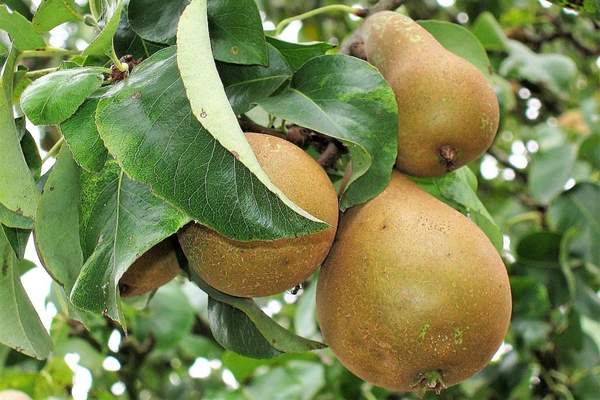
Scientific name: Pyrus communis
Pears are a delectable companion to apples. While the two trees are unrelated, both are commonly grown throughout moderate climates like zone 6. Pear trees come in many varieties, including full size plants, which grow up to 40 feet tall, semi-dwarf, and dwarf versions.
There are hundreds of varieties of European pears. Some heritage versions are the Summercrisp and the Luscious.
You could even grow Bartlett pears, which are the most popular pears grown and sold throughout the world! Whatever varieties you pick, make sure to have at least two trees of two different varieties, or else you won’t get fruit.
3. Apricot
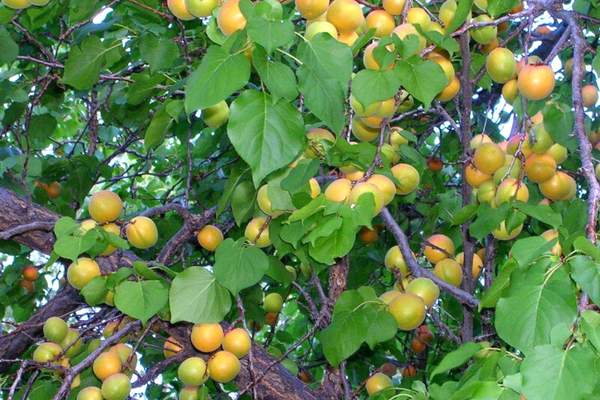
Scientific name: Prunus armeniaca
The nectar-like fruit of the apricot tree is worth spending several years waiting for. An apricot tree is a great addition to your garden when you’re looking for something not too high maintenance that packs a flavorful punch. This tree grows best between zones 5-8, so zone 6 is in its prime production range.
You can harvest fresh apricots by the middle of the summer. Remember to keep your apricot tree away from pooling water, dense soil, and bad air circulation. They prefer weather with breezes, well-drained soil, and high air flow.
4. Mulberry
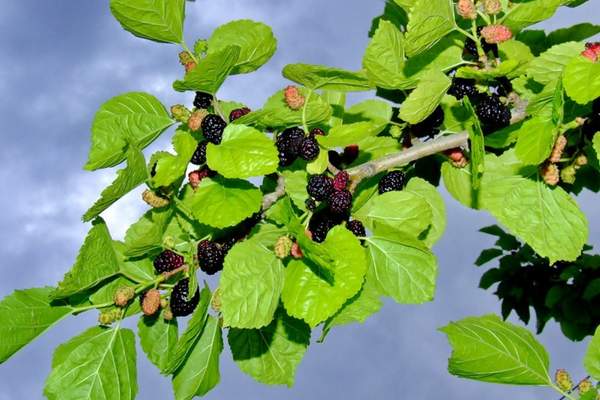
Scientific name: Morus rubra
Mulberries grow in both bush habit and tree habit. These forms depend on where you find the tree and if it’s been trimmed before or has been left wild to grow as it pleases. If you choose to plant one, look for well-watered soil that drains regularly.
Slightly acidic soil is fine. Harvest the berry-like fruits in the summer. It’s one of the few fruit trees on this list that can handle partial sunlight. It also doesn’t like being pruned, so make sure you plant it somewhere away from infrastructure.
It’s a fast grower that can reach a maximum of 60 feet tall. If you don’t want to eat the fruit yourself, don’t worry. Birds love mulberries and they will be more apt to visit your yard when the berries are ripe.
5. Cherry
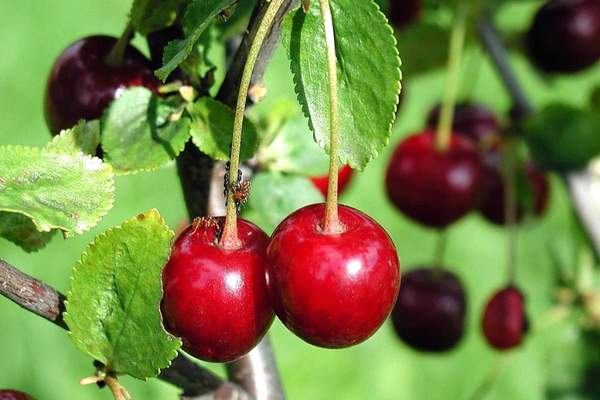
Scientific name: Prunus avium
Cherries are a double blessing: their bright white blossoms give way to juicy, tender fruit. Those who live on the west coast could try Bing cherries, the most popular variety of cherry. Others include Washington state’s Rainier cherry, Montmorency, and Gold.
Like apples and pears, cherry trees come in three sizes: standard, semi-dwarf, and dwarf. These sizes produce different amounts of cherries.
One cherry tree can net you up to 50 quarts of fruit in a single year! Plant at least two together to cause cross-pollination.
6. Plum
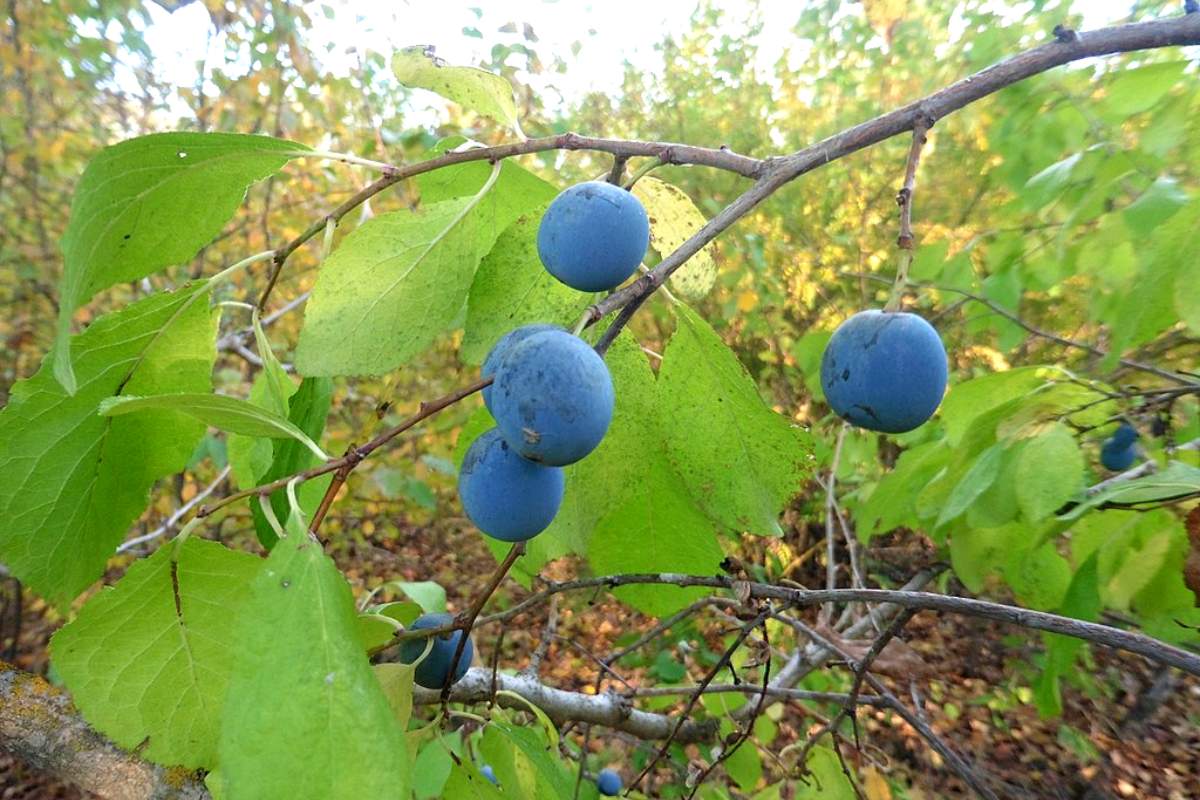
Scientific name: Prunus domestica
Like peaches and cherries, plums are drupes. These fruits have a seed with a hard outer shell within the fleshy fruit. This delicious fruit makes them valuable as backyard fruit trees, since they provide such an abundant harvest.
Plum trees range in height from 16 to 33 feet and take about 6 years until they bear fruit for the first time. European plums are self-pollinating, so you won’t have to worry about planting more than one tree.
Just remember that they’re more prone to infections like black knot and the fruit they produce isn’t as big as hybrid plum plants. Some good varieties to grow in zone 6 are Premier and Stanley.
7. Fig
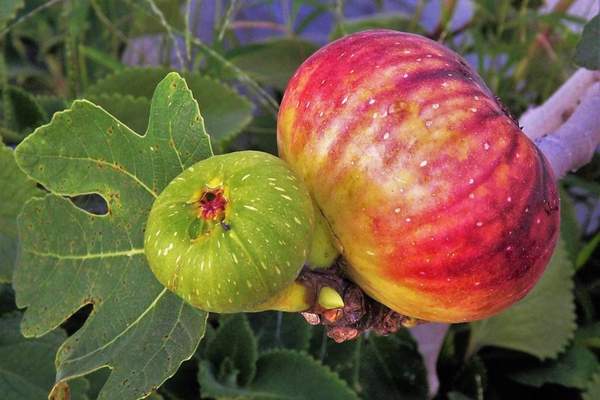
Scientific name: Ficus carica
The fig is a staple of the Mediterranean, but some cold-hardy varieties survive as far north as USDA zone 5. With some effort and some extra TLC, you can grow your own fig outdoors too. Figs are very sensitive to moisture, especially during the warm months.
Humidity decreases their productivity and increases the probability of the fruits rotting on the vine. Figs have a propensity to absorb water so quickly that they split and are ruined. Some humidity- and cold-resistant fig varieties include Black Celeste, and Chicago.
8. Persimmon
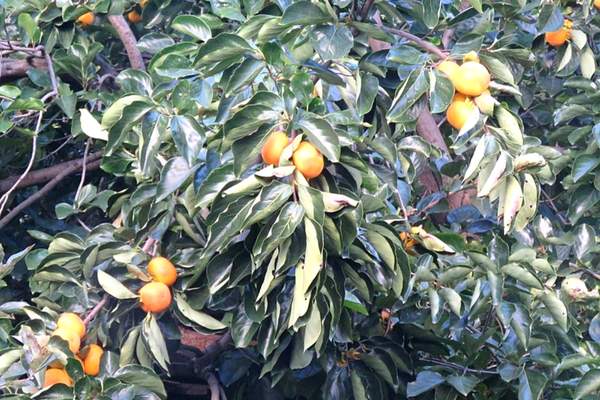
Scientific name: Diospyros virginiana
The persimmon is a tomato-sized orange fruit which ripens on trees well into late fall. They have been a factor in American culture dating back hundreds of years. Persimmon trees grow in the wild in the Eastern United States and west to Iowa, but they can be planted throughout the country.
Plant both male and female American persimmon trees to ensure fruit ever year. They prefer neutral soil, sunny conditions, and loamy soil that will accommodate their taproots. Compared to cherries and apples, they are low maintenance because they require less pruning and fertilization.
9. Peach
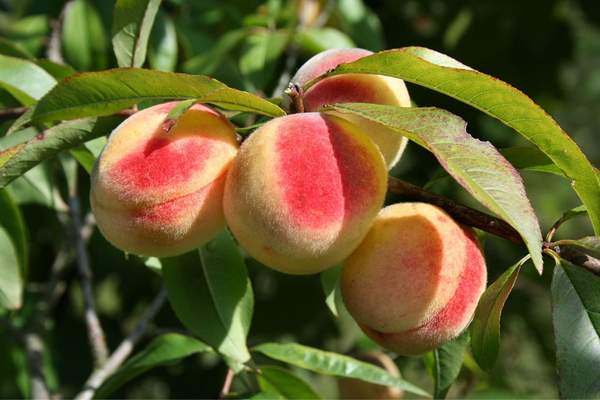
Scientific name: Prunus persica
Peaches are a high-maintenance fruit tree with a high-value harvest. They are susceptible to several diseases, including peach leaf curl, Brown rot, and Bacterial spot. They require soil that drains well, full sun, and regular fertilization for several years after planting.
Don’t forget to prune it each spring so that the crown is spaced out to hold fruit properly. Good peach tree varieties for zone 6 include Red Havens and Veterans.
Good news: peaches are self-pollinating, so you only need to plant one at a time to get fruit!
10. Nectarine
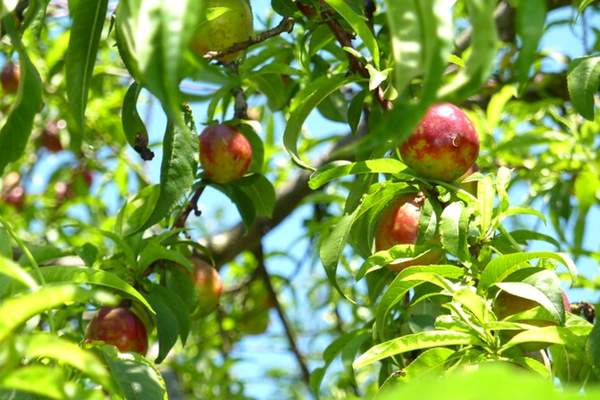
Scientific name: Prunus persica
Nectarines can be grown in an outdoor orchard or inside in pots. The USDA growing zones 6-8 are great for these trees. You’ll need to mulch, fertilize, and water them regularly.
Nectarines are similar to peaches in that they self-pollinate, so you need only one to get a crop of quality nectarines. Don’t forget to thin them out to 6” apart. It will prevent branch breakage and other problems.
11. Paw Paw
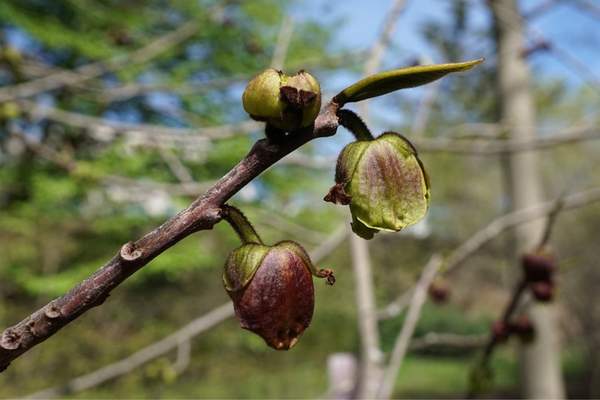
Scientific name: Asimina triloba
The Paw Paw isn’t well known outside of its native range in the Eastern United States. Despite that, it produces a massive fruit with a custard-like consistency that smells similar to grapes. The taste is between a mango and a banana.
Pawpaw trees grow about 25 feet tall when they’re in full sun or partial shade. The soil needs to be moist, but it has to drain well. Ensure the tree stands alone by removing suckers.
